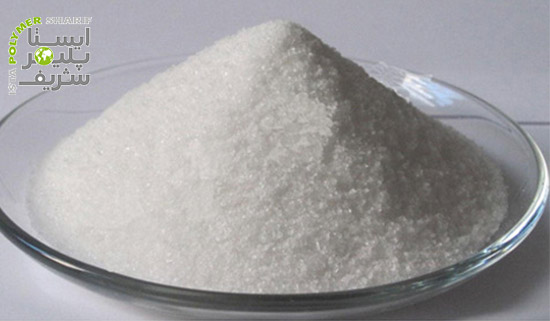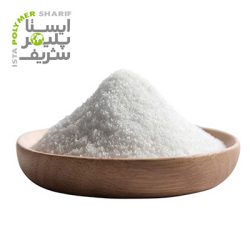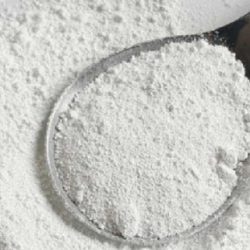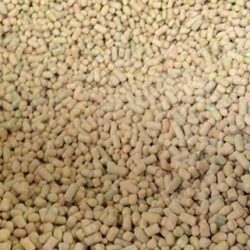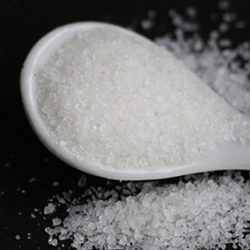Another widely used polymer product in various industries is polyelectrolyte. This product is considered a flocculant and is also known as polyacrylamide. Generally, polyacrylamides are divided into three categories: anionic, cationic, and nonionic. All three of these substances possess both polymeric and electrolytic properties. The primary application of electrolytes is to remove colloids and impurities in water, wastewater, and effluents through coagulation and flocculation. To completely remove colloids and create larger, heavier flocs, a series of other coagulant materials can also be used. This article will introduce polyelectrolyte, its characteristics, and its applications. If you are interested in learning more about this, be sure to follow this content to the end.
What is Polyelectrolyte?
Polyelectrolyte is a polymeric substance that reduces impurities and wastewater effluents through coagulation. This polymeric substance is water-soluble and consists of acrylamide molecules. Generally, polyelectrolyte is a non-biodegradable substance that decomposes into organic compounds after several weeks.
The physical appearance of polyelectrolyte is fine, white, crystalline, and odorless granules. This substance can dissolve in ethanol, ether, and chloroform. Polyelectrolyte settles twice as fast as other types of coagulants. This product belongs to the category of inorganic chemicals. Typically, these products are in powder form, but in some cases, they are produced in liquid form based on customer needs. Polyelectrolytes have various industrial grades, but they are never produced in food-grade quality.
Types of Polyelectrolyte

Polyacrylamide, based on the type of electrical charge it carries, is classified into three categories: anionic, cationic, and nonionic. Below, the details of each type of polyelectrolyte will be discussed. Therefore, it is recommended to read this section thoroughly.
Anionic Polyelectrolyte
Anionic polyelectrolyte, or flocculant, is a polyelectrolyte with a negative charge. Generally, anions are homopolymers and copolymers of acrylic acid salt with acrylamide, forming a linear polymer. This type of polymer is synthesized through polymerization at very high temperatures.
Anionic polyelectrolyte is insoluble in solvents such as ether, benzene, acetone, and other organic solvents. It possesses valuable properties such as flocculation. Anionic polyelectrolyte can also perform functions like thickening, shearing, and dispersion. This type of polyelectrolyte is used in oil recovery, stone-cutting factories, coal washing, metallurgy, chemical coagulation, sugar production, pharmaceuticals, textiles, paper manufacturing, concrete, various construction materials, and environmental protection.
Cationic Polyelectrolyte
This substance is a homopolymer or copolymer with acrylamide that carries a positive charge. These cationic nanoparticles are connected in a trimonomeric structure, with their density, charge, and molecular weight being interdependent. Cationic polyacrylamide consists of epichlorohydrin and other secondary amines such as dimethylamine.
Nonionic Polyelectrolyte
Nonionic polyelectrolytes are neutral or uncharged homopolymers, also known as nonionic electrolytes. Their chemical formula is as follows:
(C4H6)n/2(C=O)2(NH2)2
Production Method of Polyelectrolyte
The production of polyelectrolytes is achieved through the liquid-phase polymerization of acrylamide. This polymerization method uses aqueous solutions at around 60 degrees Celsius. The concentration percentages in this composition are 0.36 for acrylamide and 0.04 for acrylic acid. Using the inductive properties of radiation and microwave heating, linear polymer chains with good water solubility are formed. In this state, the remaining monomer concentration is reduced, increasing the flocculation capacity of the produced polymers. Hence, the production of acrylamide is easily accomplished. This substance has specific characteristics that make the synthesis of high molecular weight polymers challenging.
How Polyelectrolyte Works in Flocculation and Wastewater Treatment
Polyelectrolyte works by adding a measured amount to the desired solution, which then starts flocculating and settling after complete dissolution. When cationic polyacrylamide combines with wastewater, active amide groups on the polymer chain are adsorbed onto the suspended particles in the wastewater, forming a bridge. This method releases water from the new structure.
Through this process, small flocs begin to form, eventually creating larger flocs. This floc formation increases the sedimentation speed in clarifiers and DAF system floaters, resulting in enhanced sludge dewatering.
Applications of Cationic Polyelectrolyte

Cationic polyacrylamide is extensively used in municipal or domestic wastewater treatment systems. These materials are also used in paper manufacturing, the oil and gas industry, petrochemical industries, mining, textiles, chemical coagulation, leather tanning, dyeing, drilling, food industries, and agricultural pesticide production.
Polyelectrolyte MSDS
Polyacrylamides are available under various brands such as Polyelectrolyte Xian, Tianrun, Kemira, Basfloc, Ecogreen, Fuyun, Tiana, and more. The prices of different polyacrylamide brands vary according to their quality. Each type of polyacrylamide, whether cationic, anionic, or nonionic, has different grades. For example, anionic grades include A500, million20, white granule, and fast complete. Cationic grades include C1000, cationic, white, dry powder, and <40 min.
Conclusion
This article introduced and reviewed the features and applications of polyacrylamide polymers, also known as polyelectrolytes. As mentioned, polyacrylamides are a type of industrial polymer used for coagulation. These materials can become a charged molecular chain through ion production mechanisms. Polyelectrolytes are classified into three categories: cationic, anionic, and nonionic polyacrylamide, each with unique properties and characteristics. The primary application of these substances is in municipal and domestic wastewater treatment, paint manufacturing, textiles, leather tanning, and more. If you intend to purchase polyelectrolyte, you can contact ABtank experts at 02144787934 and 02144787935.

